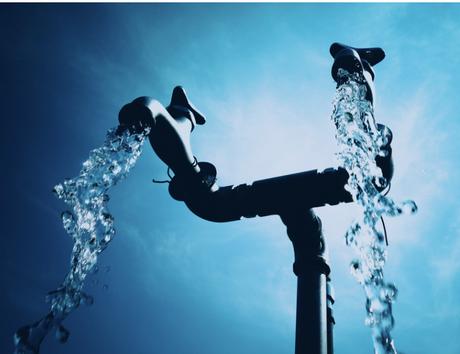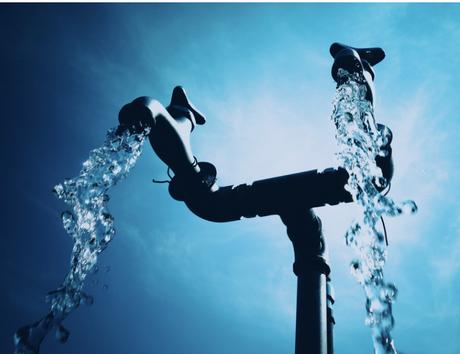

You'd be surprised at how much the quality of the water you are using can impact your life. When you drink water that contains too many harmful substances and chemicals, it can damage your teeth and even cause your hair to fall out.
Even if you're living in a developed country, your water may be contaminated by pathogens, chemicals and sometimes even toxins from the piping. So, if you are concerned about how the safety of your water supply, it's understandable.
#1. Stay InformedYou're already on the right track though, because being aware is the first step to taking action. Here's some useful advice on how to proceed and make sure that the water you are using is not affecting your health.
The first step to ensuring you have safe drinking water at home is to stay informed. This may sound like a bit much, but if you really are concerned, there's nothing wrong with asking a few questions. And the best way to do this is by contacting your local government.
Test Your WaterMunicipalities usually keep track of all facilities - be it the electricity or water supply of an area. In fact, it is mandatory for local water utilities to have an annual Consumer Confidence Report on water quality. And as a citizen, it is your right to have access to this information.
Water quality depends on a number of things. Of course, it shouldn't have bacteria or pesticides in it. But there are other chemical components that contribute to the quality of the water like the amount of lead, chlorine, the water's hardness, pH, etc.
That's why it's a good idea to get your water supply tested. All you have to do is send in your samples to a certified lab. But make sure you collect the sample very early in the morning. This is because the more water that is used throughout the day, the more likely the lead in it will get flushed out.
#2. Invest in a High-Quality Filtration SystemIf an official test is too expensive for you, you can also use an at-home water analysis kit. These kits usually contain strips that change colors if a contaminant is detected. They're very easy to use and you can choose which contaminants you want to test for.
Installing a filtration system for your house is a guaranteed way to ensure safe water. But make sure the filter is certified by a renowned third party, such as the Water Quality Association or the NSF International.
Now, there are many different types of filters to choose from, and you'll need to get one that is most suitable for your household. Your choice will depend on a number of factors, like the biochemical properties of your existing water supply, water pressure, your budget and even the material of the water pipes.
Activated Carbon FiltersHere are a few common filters, that usually work for everyone -
These filters are ideal for removing chlorine, chloroform, magnesium, and larger particles. They contain activated carbon, which uses adsorption to provide a cleaner, odorless and better-tasting water supply.
Reverse Osmosis FiltersActivated carbon filters are often used together with other filters for best results.
Reverse osmosis filters are perfect for getting rid of toxins like arsenic, radium, salt, etc. as well as water soluble compounds like fluoride and chromium. It also works well for removing the dangerous bacteria that thrive in water.
These filters are actually one of the most popular, because of their ease of use. Contaminants aren't trapped in the filters and are simply flushed away, so there is no hassle of maintenance.
Ionizing FiltersThere are also reverse osmosis faucets for your everyday use. They are very high-quality water treatment system but also very convenient to use.
Have you noticed stains on your dishes, even though you wash them regularly? It could be because your water is too hard. And that is exactly what ionizing filters tackle.
These filters use electrolysis to soften water and remove radioactive materials. Water filtered out this way is not only better for your dishes, but it's also healthier for your skin and hair because of its low acidity.
UV FiltersHowever, it's not a good option if your main goal is to remove organic materials or bacteria from your water supply.
UV filters are quite new, and, as the name suggests, they use ultraviolet radiation to filter water.
This is the most environmentally-friendly option, without any chemicals or added heat. It's also very powerful and gets rid of all sorts of waterborne bacteria.
Filter Maintenance is ImportantHowever, it doesn't do much for other biochemical compounds, so if you have those issues, you might want to use the UV filter alongside another treatment option.
Your job doesn't just end as soon as you buy the filter. Remember, no matter how high tech it is, a filter is only effective when it is well maintained and serviced.
#3. Try DIY Water Treatment OptionsSo, make sure to follow all the instructions that come with the system and, if needed, replace the filter periodically. You don't want your contaminants to build up, because they'll eventually leach back into your water supply.
If a filtration system is too expensive for you, don't worry. This doesn't mean you are doomed to drink unsafe water.
Although it will involve a bit more work, there are some things you can do yourself to ensure that your drinking water is potable.
However, it's important to note that most of these methods only work for biological contamination, and don't remove chemical pollutants or toxins.
Boil Your Water Before Drinking it
This one is quite obvious. If you suspect that your water supply is not of the best quality, you should definitely boil the water before drinking it.
Chlorine Bleach Can Filter WaterAccording to the US Centre for Disease Control, water needs to come to a rolling boil for at least a minute to kill all pathogens.
Here's some news for you - household bleach is a pretty good DIY option for treating your water. This might sound crazy, but it's what most developed countries actually rely on.
As per the Centre for Disease Control's recommendations, adding ¼ of a teaspoon of bleach per gallon of water will do the job. Just make sure you let the solution sit for at least 30 minutes before drinking it.
Iodine Works TooHowever, you need to be very careful with measurements, because it is, after all, bleach. And consuming too much of this can be harmful to your health.
Iodine is also a good way of killing bacteria and viruses in your water. They're sold in solution, crystal and tablet forms, and are the go-to water treatment option for hikers.
Use Cold Water for Lead ContaminationThe products usually come with instructions, which you should follow closely. However, pregnant women should not be using this filtration method as it may be dangerous for their health.
If your water supply is currently contaminated with lead, switch off the heating and let cold water run through your taps for five minutes. This will flush the toxins out.
Final ThoughtsAnd when it comes to cooking or drinking water from a lead contaminated supply, always make sure it's cold. Lead can't be removed with any of the other DIY methods, and heated water out of a tap tends to contain higher levels of lead.
Your water supply is not something you should ever compromise on. It's a basic right, and drinking unsafe water can actually cause serious health issues.
While changing the piping or fixing the entire local supply is important, it's not always the fastest or most feasible solution.
So, do the wise thing and start with the small doable changes in your own home first. There are some DIY treatments, but this is in no way a permanent fix. It's best to just invest in a good filtration system if you can afford it.
Remember, health always comes first!

